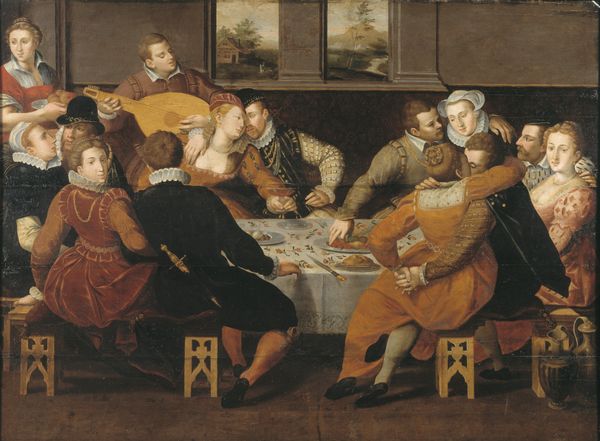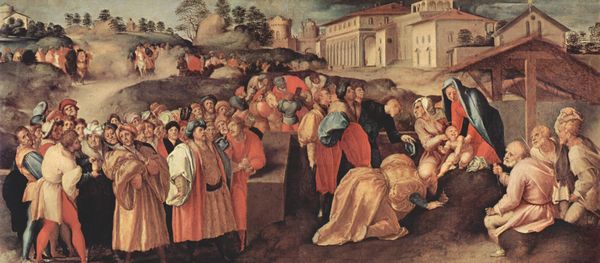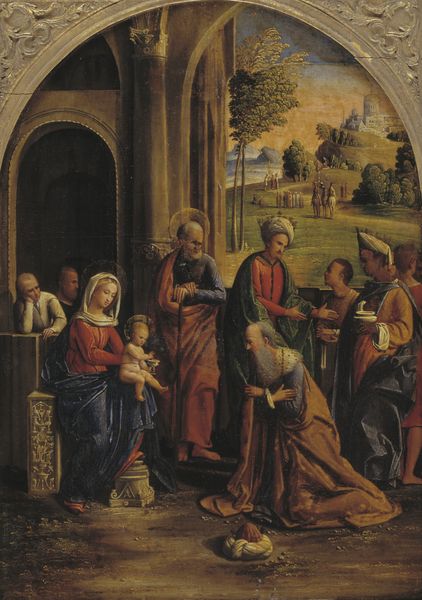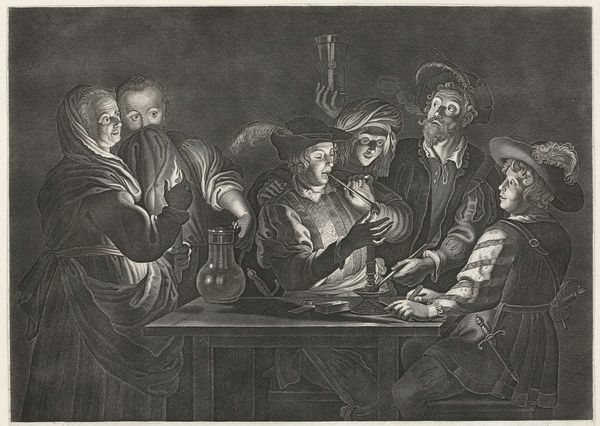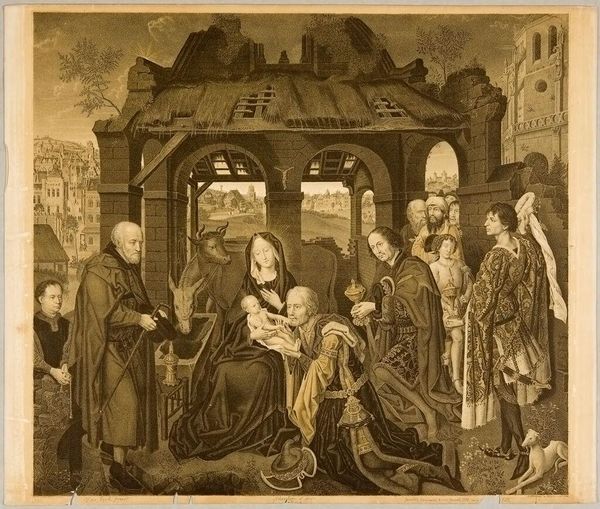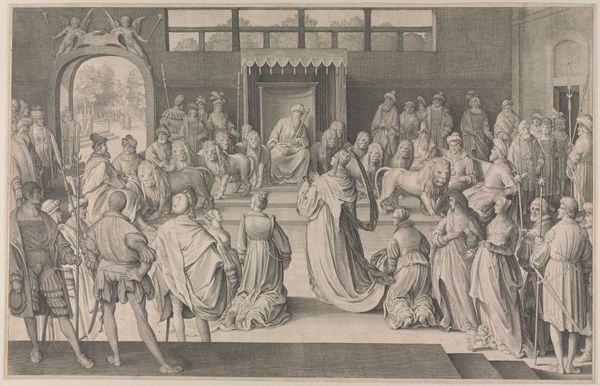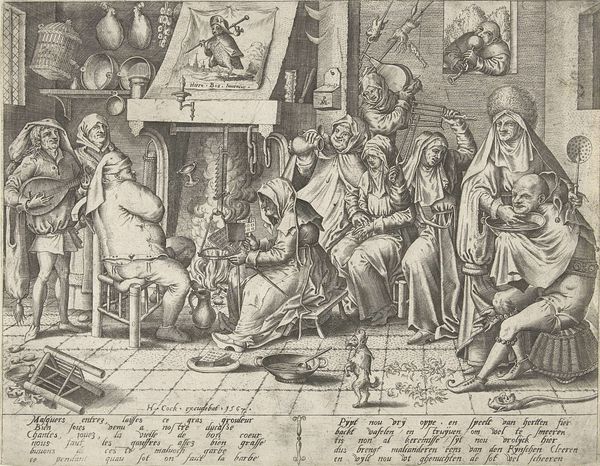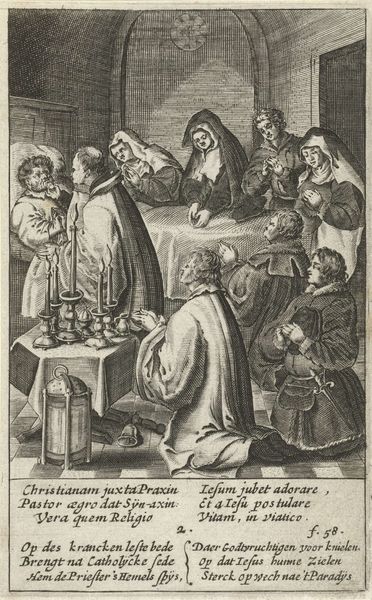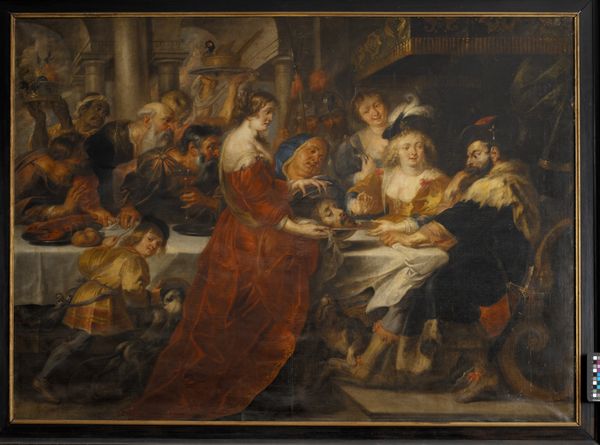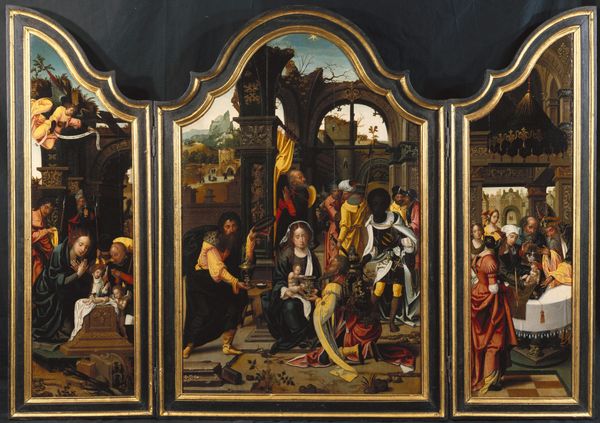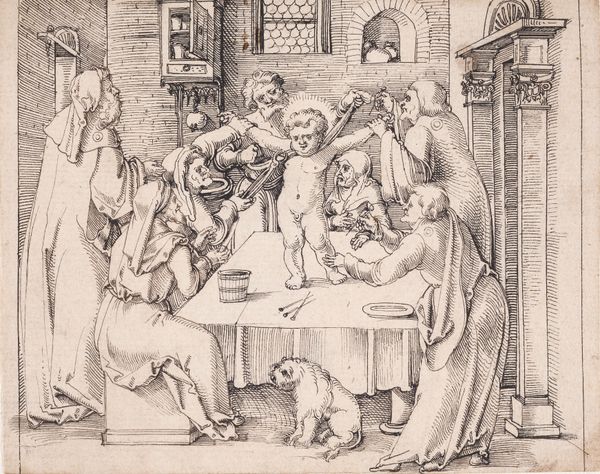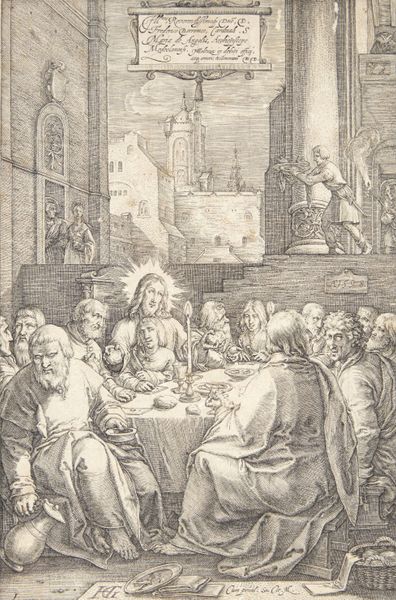
painting, oil-paint
#
narrative-art
#
painting
#
oil-paint
#
figuration
#
oil painting
#
jesus-christ
#
underpainting
#
christianity
#
painting painterly
#
history-painting
#
italian-renaissance
#
christ
Dimensions: 100.1 x 130.2 cm
Copyright: Public domain
Curator: Here we have Gerard David’s “The Marriage at Cana,” an oil on panel painting executed around 1503. It depicts the biblical story where Jesus performs his first miracle, turning water into wine during a wedding feast. It's currently located in the Louvre. Editor: You know, first impression? It's... orderly. Everyone's so neatly arranged, almost like a school play. Not what I imagine a real wedding bash felt like. I mean, where's the chaotic joy? Curator: Ah, but the order reflects the values of the time. Think about the patronage system: artists created for the church, nobility, and the wealthy merchant class. The painting isn’t simply a snapshot; it's carefully constructed to convey moral and social ideals. Editor: Okay, I get the social performance, but even Jesus looks a little…stiff. Does the lack of, let's say, dynamic energy reflect something specific? Curator: Consider the context. David was working during a time of transition in the art world. Religious scenes had to conform to a precise symbolic structure and meaning. He subtly combines detailed realism with elements meant to promote spirituality and obedience, aligning with the religious conventions of his day. Editor: It's also interesting how the foreground seems dominated by these massive water jugs. Almost makes Jesus a secondary figure in his own miracle! A sneaky social commentary, perhaps? Curator: I suspect the jug placement may instead be strategic, pointing directly to the impending miracle. Gerard was very thoughtful in leading the viewer through the narrative. Also, the presence of donors would've certainly had bearing. These could very well be portraits of prominent citizens from Bruges. Editor: Always with the politics, aren’t you? I suppose my impulse to read into everything gets a little too excited sometimes! Still, you gotta admit there's a calmness to it. Everyone is mannered. There’s almost no action or anything dynamic happening. Curator: Right, this is not Caravaggio with his dramatic lighting! The charm comes from its quiet storytelling, reflecting the artistic preferences of its period and a careful observation of social behaviors. Thanks for seeing beyond face value and helping to dig a little deeper. Editor: No problem. Turns out even a Renaissance wedding scene can get this old mind moving a little, even when there's too much decorum for my taste. It's really a slice of history carefully rendered.
Comments
No comments
Be the first to comment and join the conversation on the ultimate creative platform.
